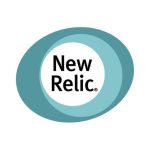NewRelic is a great tool to get an overall view of your infrastructure, both to determine whether it's up or down, and to understand the load placed upon key resources such as your database. The database is usually the heart of any application, most web apps are glorified [tooltip content="Create, Read, Update, Delete" gravity="n" fade="0"]CRUD[/tooltip] interfaces for … [Read more...] about How to Install the NewRelic MySQL Plugin
Archives for August 2018
Repair “Repository Error: database disk image is malformed” YUM Issue
This YUM database issue troubled me a fair few times in the past, so I kept the following fix on-hand to resolve it in a pinch. The root cause of the corruption turned out to be something modifying the YUM database outside of YUM itself and making a hash of it (a badly written Nagios plugin), still, your mileage may vary but it's something to think about. To repair this … [Read more...] about Repair “Repository Error: database disk image is malformed” YUM Issue
How to Check NTP Connectivity and Function on the Command Line
Any computer needs to have accurate and accurate date and time, and keeping time accurately without the use of NTP nowadays is troublesome given CPU tics cannot be relied upon in the virtualised world, and falling back to BIOS clocks is long considered bad practice given secure communication relies upon having time within a threshold of whom it wishes to communicate with. With … [Read more...] about How to Check NTP Connectivity and Function on the Command Line
How to Perform a GET Request with CURL via the Command Line
This post is part of a wider series on CURL, a very useful tools utilised extensively either straight from the command line, or through scripting language specific variants. GET is one of the most commonly used HTTP methods, and is used to request data from a specified URL. When making a GET request, remember that the query string (as in, the key/value pairs) make up the … [Read more...] about How to Perform a GET Request with CURL via the Command Line
How to Install and Remove a Deb Package via the Command Line in Ubuntu
More often than not, I find it easier to install packages via the command line instead of heading through graphical downloaders/installer; also, if you wish to script the setup of your machine, it makes sense to grab and install deb files using the command line directly. Here's how you can install .deb packages with ease. I'm going to show you how I installed Google … [Read more...] about How to Install and Remove a Deb Package via the Command Line in Ubuntu




